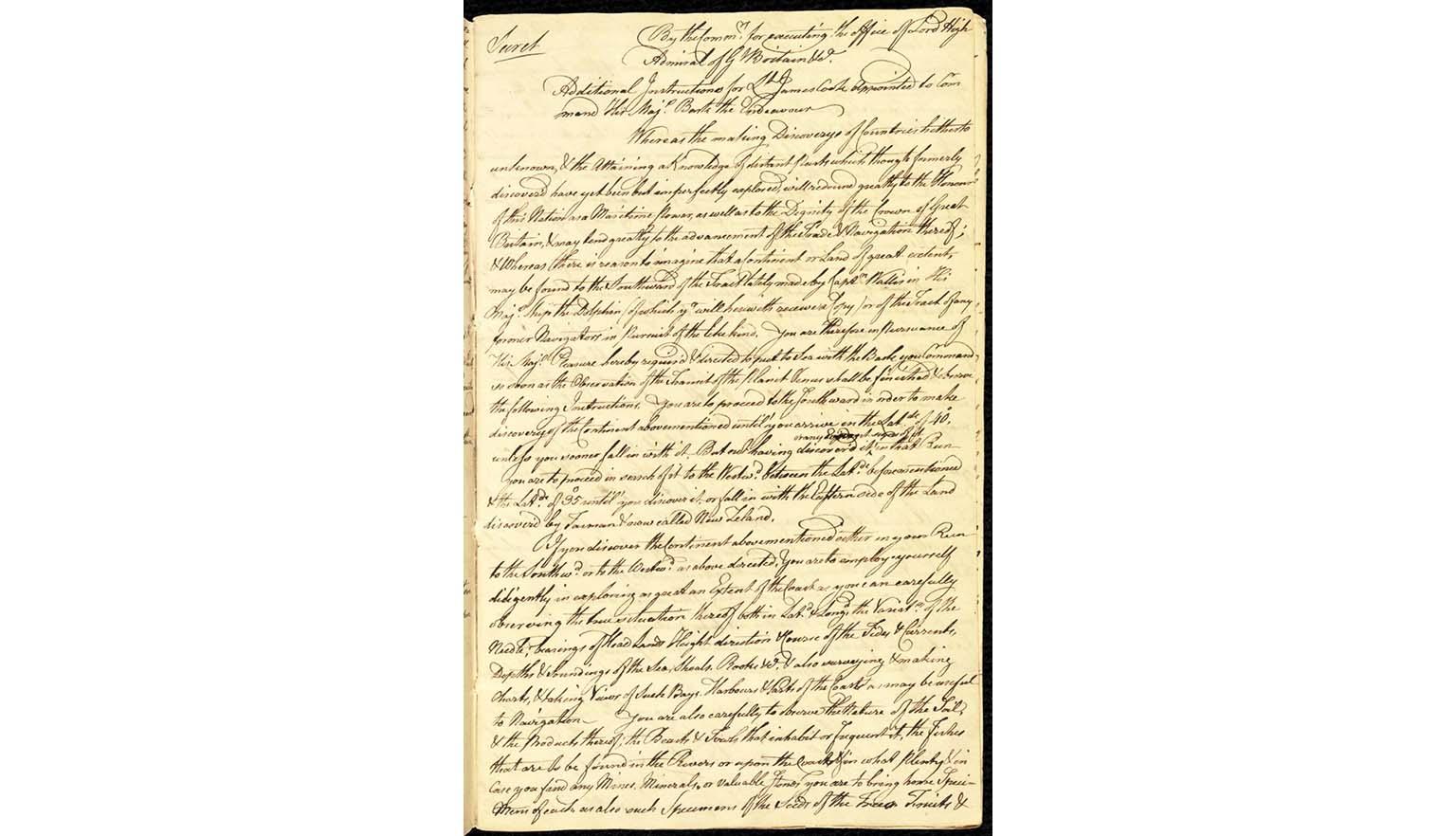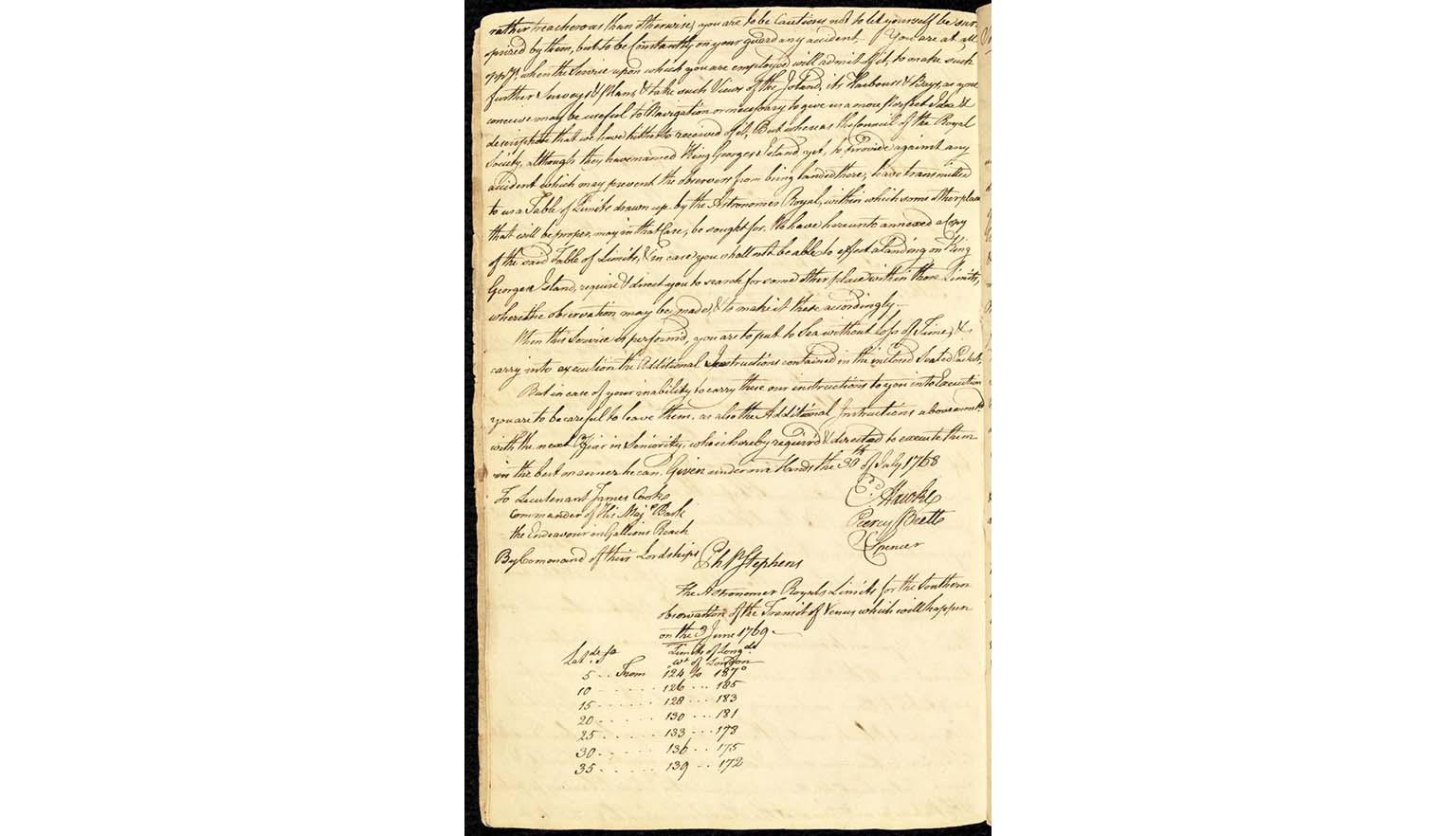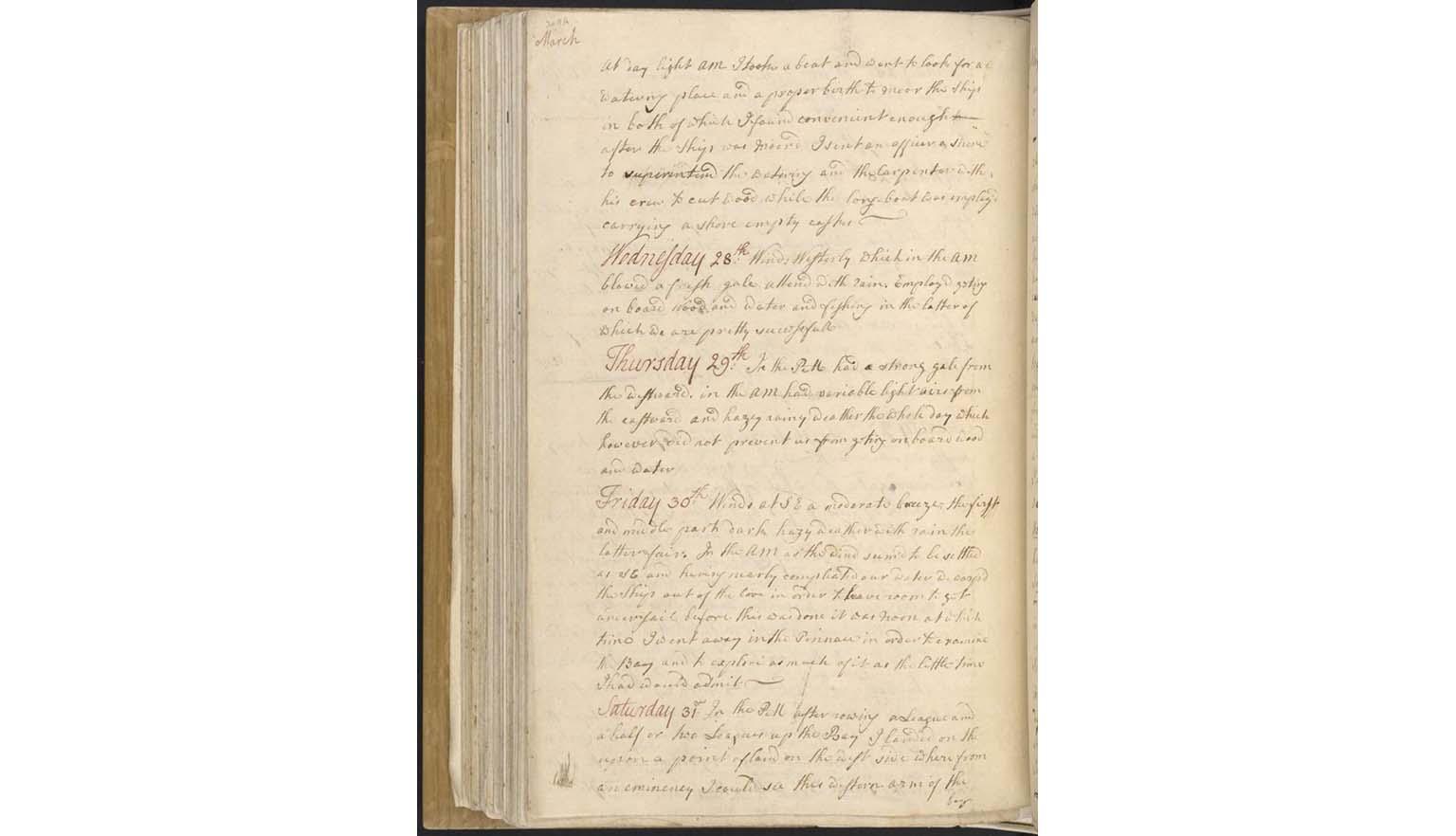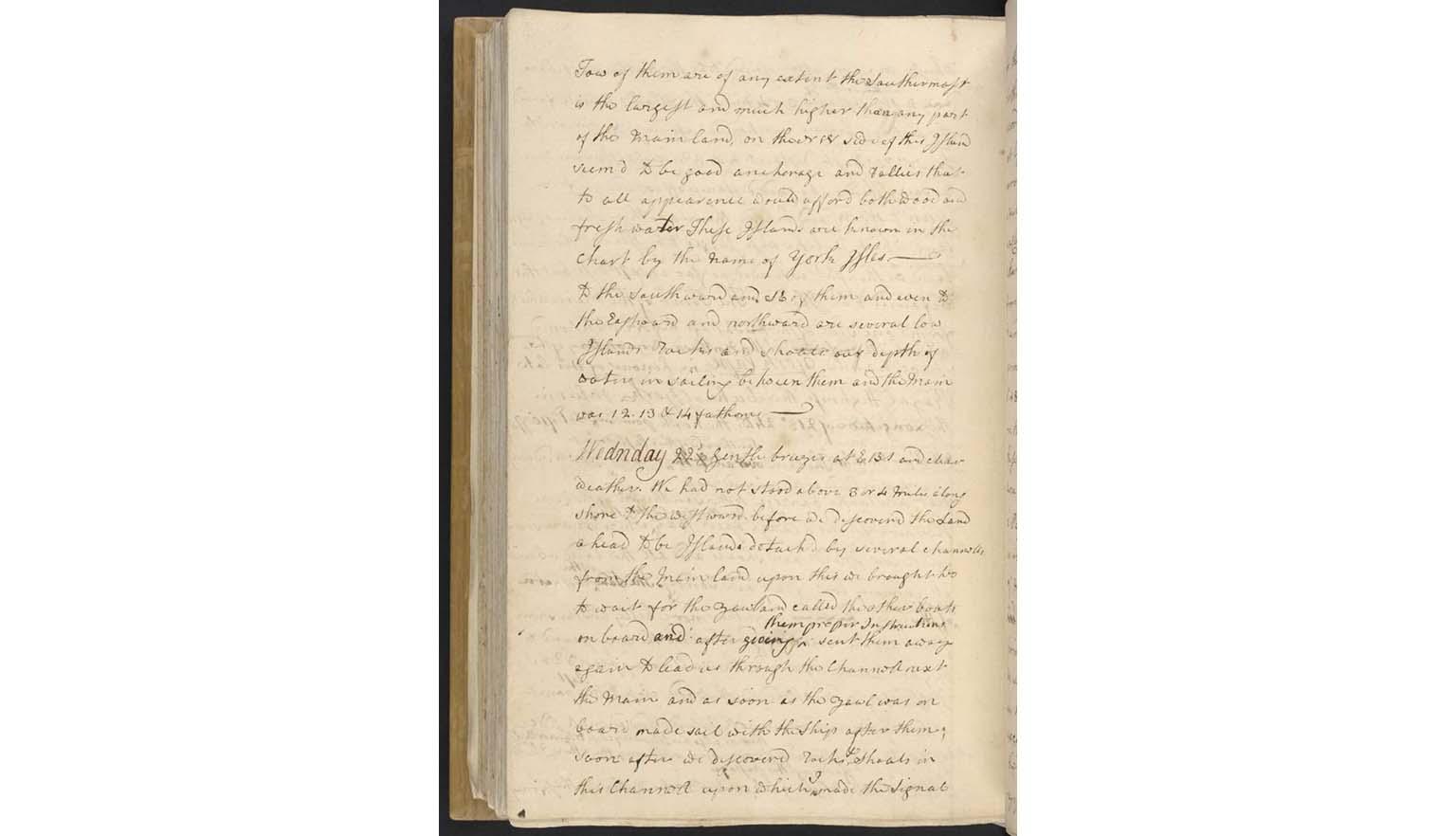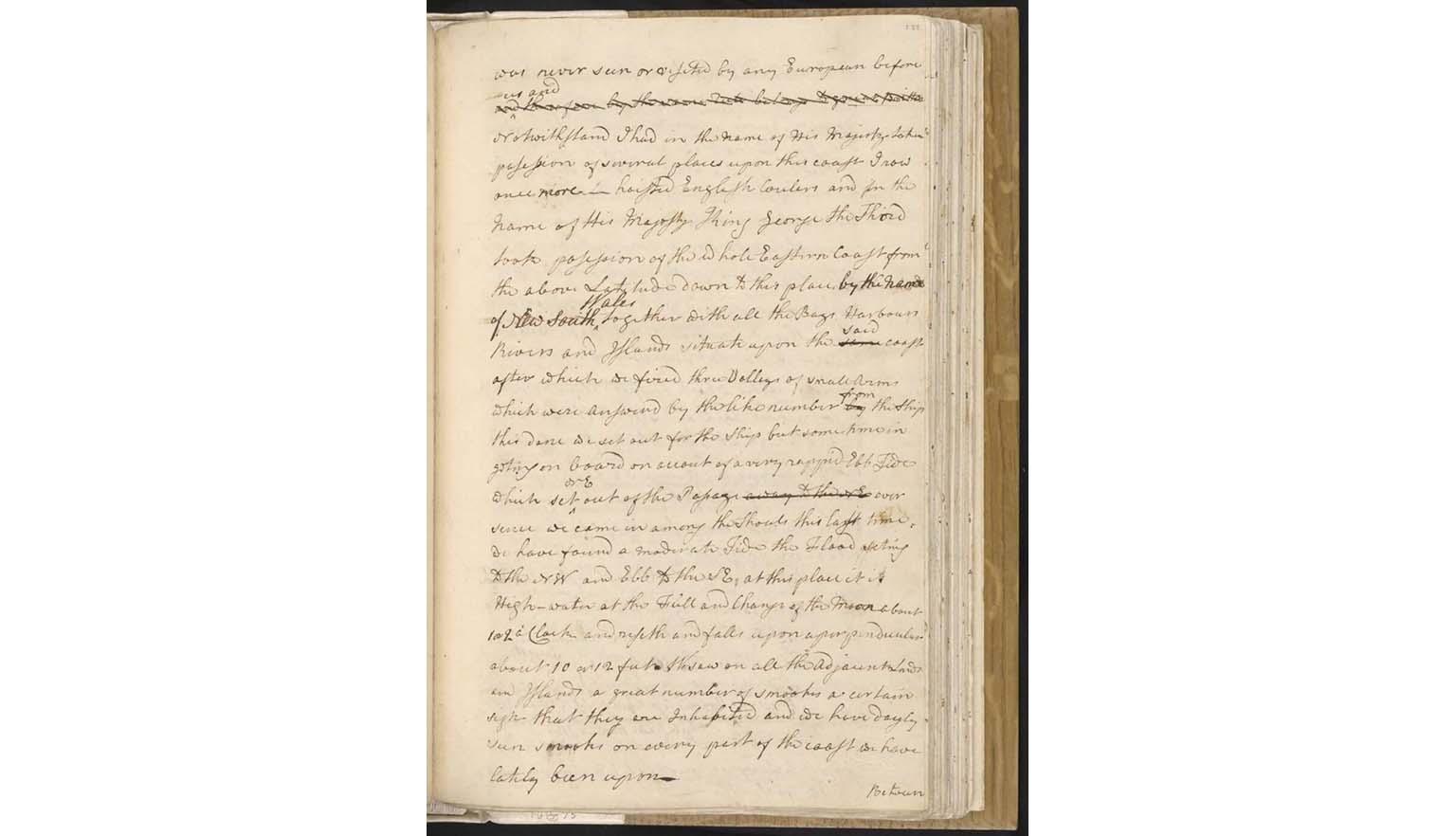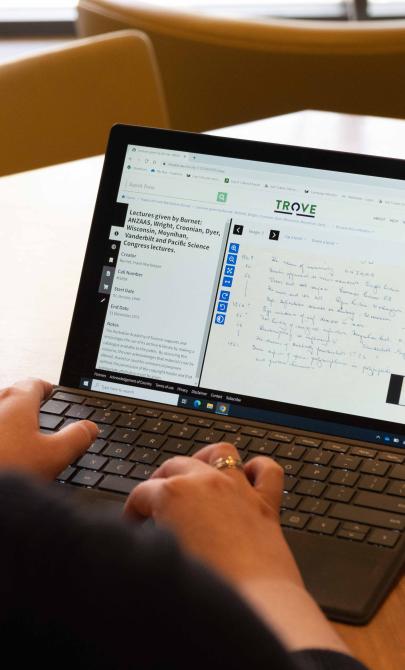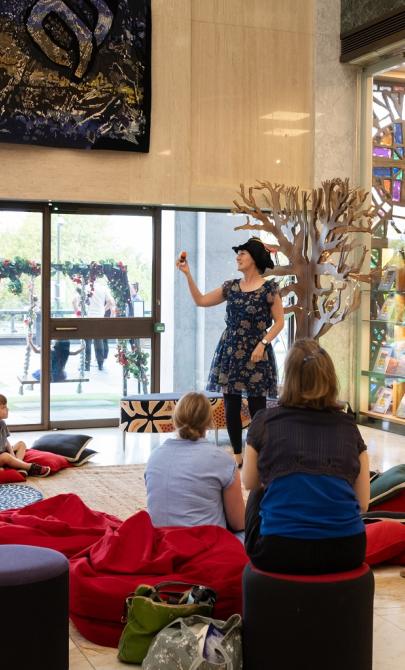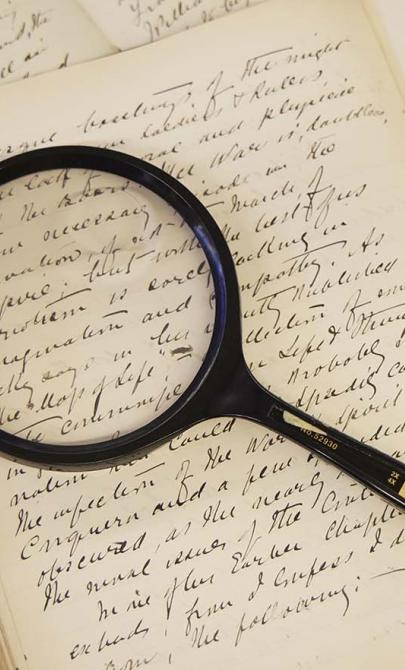Instructions from the Admiralty
Secret orders and the search for Terra Australis
Before departing England, Captain James Cook was given a series of secret instructions by the British Admiralty. Each envelope was to be opened only after the previous mission had been completed.
After completing the scientific observation of the transit of Venus in Tahiti, Cook opened the next set of instructions. They read:
There is reason to imagine that a Continent or Land of great extent, may be found to the Southward of the Tract lately made by Captn Wallis in His Majesty’s Ship the Dolphin … so soon as the Observation of the Transit of the Planet Venus shall be finished and observe the following Instructions. You are to proceed to the Southward in order to make discovery of the Continent abovementioned until you arrive in the Latitude of 40°, unless you sooner fall in with it. But not having discover’d it or any Evident sign of it in that Run you are to proceed in search of it to the Westward between the Latitude beforementioned and the Latitude of 35° until you discover it, or fall in with the Eastern side of the Land discover’d by Tasman and now called New Zeland.
Cook’s new mission was to sail south in search of a great southern continent—Terra Australis Incognita, or “Unknown Southern Land.” While Europeans were already aware of the landmass known as New Holland (now Australia), only the western coast had been charted. New Zealand was also known, but the existence of a larger southern continent remained unconfirmed.
In his journal, Cook later wrote:
To return by the way of Cape Horn was what I most wish’d because by this rout we should have been able to prove the existence or non existence of a Southern Continent which yet remains doubtfull … but the condition of the ship in every respect was not thought sufficient for such an undertaking.
Instead, Cook chose to return via the East Indies. His plan was:
Upon leaving this coast to steer to the westward until we fall in with the East Coast of New Holland and than to follow the direction of that Coast to the northward or what other direction it might take until we arrive at its northern extremity and if this should be found impractical than to endeavour to fall in with the lands or Islands discover’d by Quiros [i.e. Papua New Guinea].
Cook and his crew sailed west to New Zealand, where they spent six months mapping both islands. This confirmed that New Zealand was not part of a larger southern continent.
Continuing westward, they sighted land at Point Hicks on 19 April 1770. From there, they sailed north along the coast of what is now eastern Australia, mapping the shoreline and recording their observations.
Journal Entries
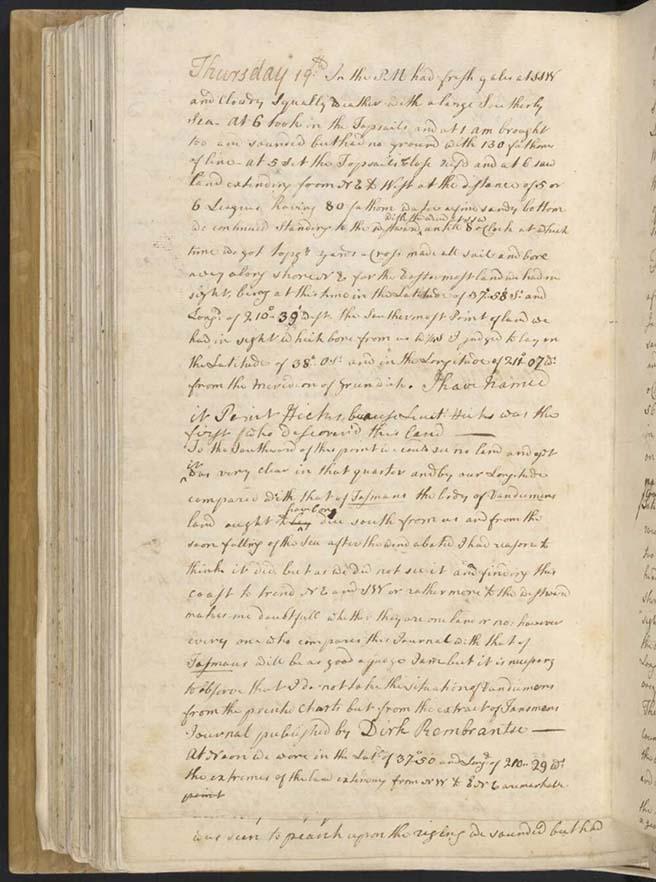
James Cook, John Hutchinson, Samuel Wallis and Henry William Ferdinand Bolckow, Journal of H.M.S. Endeavour, 1768-1771, 1768, nla.gov.au/nla.obj-228958440
James Cook, John Hutchinson, Samuel Wallis and Henry William Ferdinand Bolckow, Journal of H.M.S. Endeavour, 1768-1771, 1768, nla.gov.au/nla.obj-228958440
At 5 Set the Topsails Close reef’d and 6 saw land extending from NE to West at the distance of 5 or 6 Leagues … I have named it Point Hicks, because Leuitt Hicks was the first who discover’d this land.
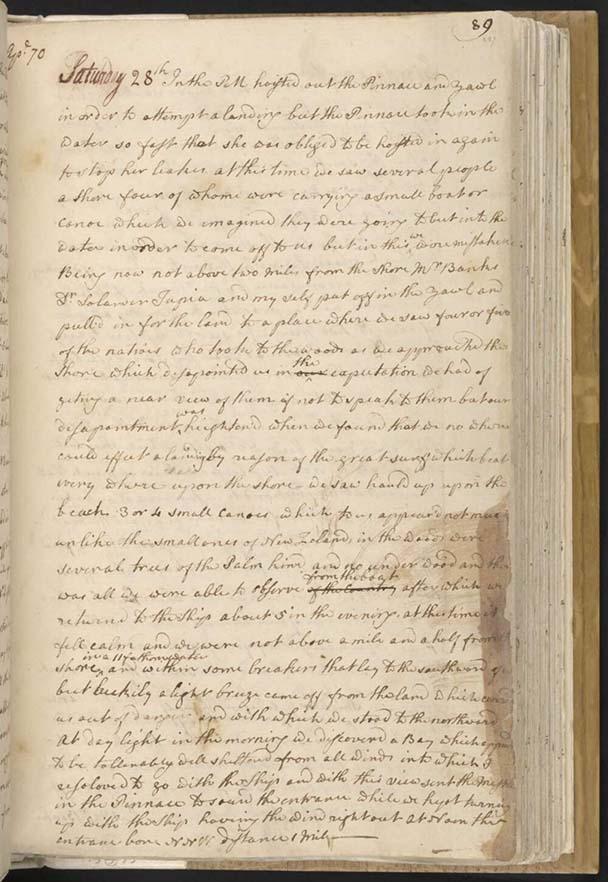
James Cook, John Hutchinson, Samuel Wallis and Henry William Ferdinand Bolckow, Journal of H.M.S. Endeavour, 1768-1771, 1768, nla.gov.au/nla.obj-228958440
James Cook, John Hutchinson, Samuel Wallis and Henry William Ferdinand Bolckow, Journal of H.M.S. Endeavour, 1768-1771, 1768, nla.gov.au/nla.obj-228958440
On 28 April 1770, Cook attempted to land:
Being now not above two Miles from the Shore Mr Banks Dr Solander Tupia and myself put off in the yawl … but our disapointment was heighten’d when we found that we no where could effect a landing by reason of the great surff which beat every where upon the shore … we returnd to the Ship about 5 in the evening.
On 22 August 1770, Cook formally claimed the eastern coast of Australia:
I had in the Name of his Majesty taken possession of several places upon this coast I now once more hoisted English Coulers and in the Name of His Majesty King George the Third took possession of the whole Eastern Coast … by the Name of New South Wales.
Learning activities
These activities explore the motivations behind European imperial expansion and examine primary sources, such as Captain Cook’s journal, to understand historical perspectives.
Activity 1: Religion and empire
European imperial powers were not only searching for wealth—they were also motivated by a desire to spread religion.
- Ask students to discuss:
- Why might European powers have wanted to spread religious beliefs during the age of empire?
- How could religion be used to justify or support imperial expansion?
- Reflect as a class:
- Was spreading religion a form of control, benevolence, or something else?
- How did these actions align with the goals of empire?
Activity 2: The concept of ‘civilisation’
European explorers and colonisers often claimed they were bringing civilisation to the people they encountered.
- Start a class discussion on the term civilisation:
- How would students define it today?
- How might it have been defined in 17th–19th century Europe?
- Ask students to consider:
- What justifications might Europeans have used to claim they were bringing civilisation to other peoples?
- How might this view have influenced their treatment of Indigenous populations?
- Extend the activity by comparing:
- How civilisation was described in historical sources versus how it is discussed today.
Activity 3: Analysing Captain Cook’s journal
Primary sources can help students understand historical viewpoints and the mindset of explorers like James Cook.
- Provide students with a transcript of Cook’s journal.
- Ask them to:
- Find specific journal entries in which Cook describes the people they encountered
- Highlight words or phrases that reveal his impressions, assumptions or values
- As a class, discuss:
- What can we learn about Cook’s perspective from his journal?
- How might his descriptions have influenced how others viewed First Nations peoples?
- What are the limitations of using one person’s journal as a historical source?
